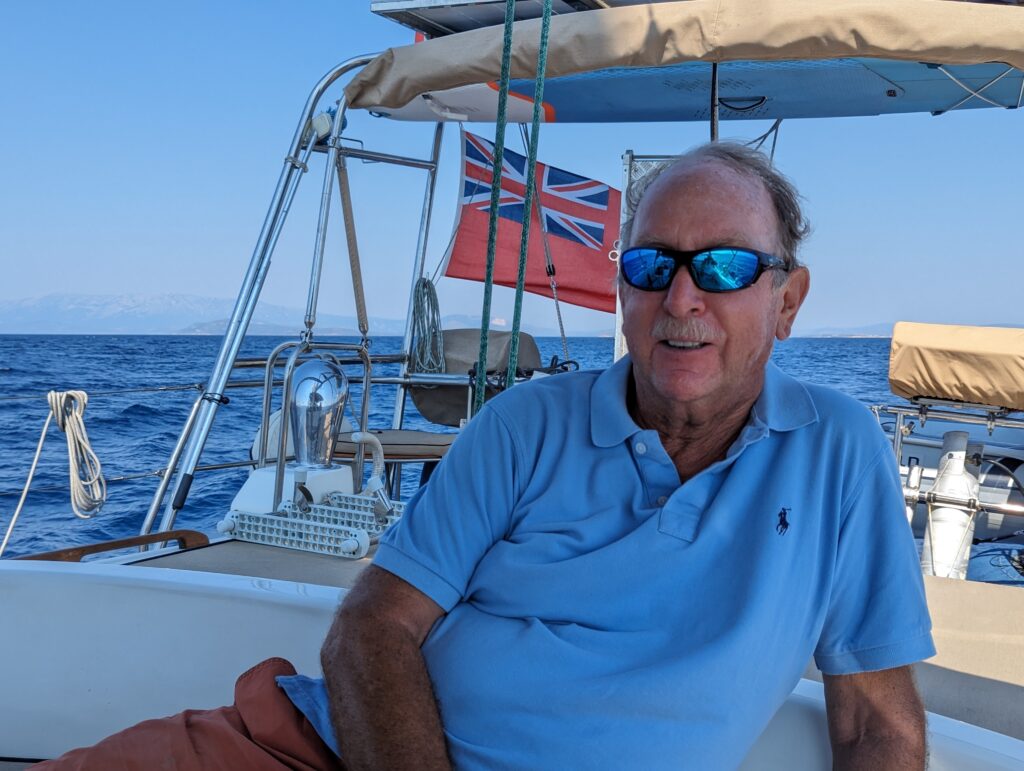
Finally, we arrived in Greece at the island of Chios in the eastern Sporades. We had intended entering Greece further north at Lesvos, to explore the eastern Sporades islands further north and the northern Sporades islands close to mainland Greece, but the approximate five weeks delay due to boat issues severely impacted our timeline. As previously mentioned we needed to be near Athens by July 20 in order to meet Doug and Carla, and Sonia who were flying into Athens airport to join us.
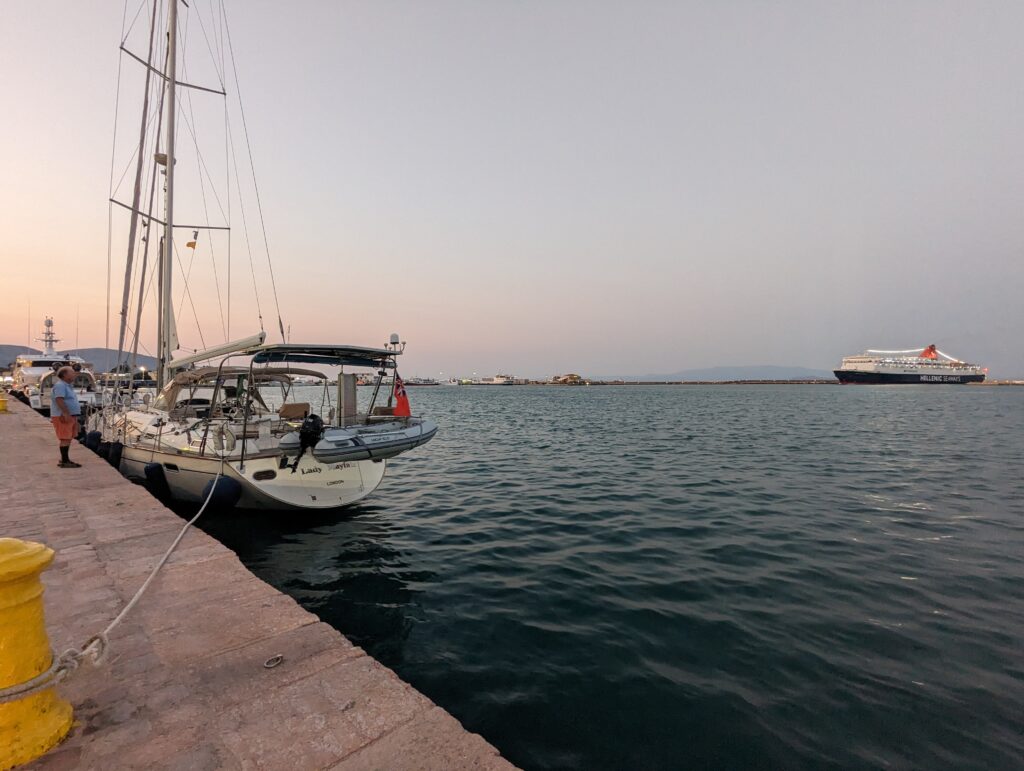
The most direct route from Çesme Turkey was to Chios, Psara, and then an overnight sail to the tip of the peninsula south-east of Athens. After completing the TEPAI online (£325 for a three month stay in Greece) prior to our arrival we departed Çesme early in the afternoon and arrived in Chios, at the main harbour, a few hours later. The oval harbour is almost 1km long, with essentially no pontoons and plenty of space along the harbour wall so we tied up alongside. There were tires strung on the quay which left multiple blacks streaks on the hull, which were later removed with a bit of elbow grease. After a quick beer we walked around to the offices of the Port Police, Customs, and Immigration. Formalities were completed in about 90 min, with all interactions quite friendly, apart from a few moments when the lack of country stamps in Howard’s US passport was questioned. We ate our first Greek meal at a quay-side restaurant.
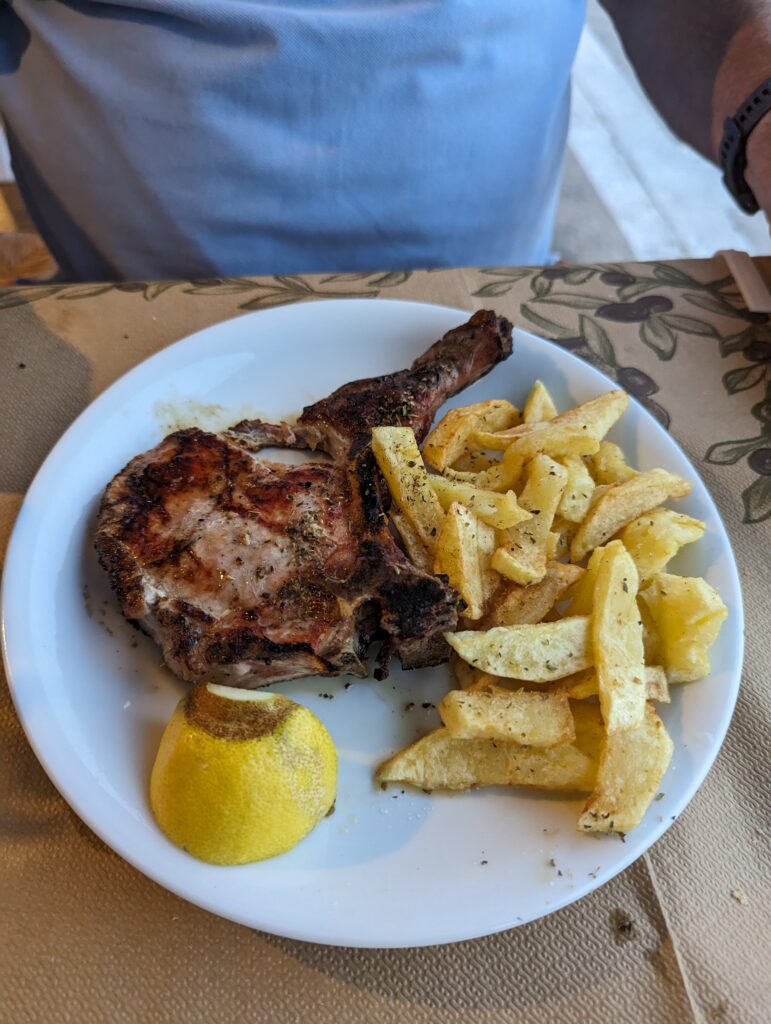
The town of Chios does not have much to offer, but the island itself has a troubled history. Chios is the fifth largest Greek island, located in the northern Aegean. Its primary export is mastic gum, the first chewing gum, which is also used to flavour liqueurs and ice cream (both delicious). Chios supposedly derived its name from Chios, the son of Poseidon.. The island has been occupied since before the Ionian invasion in the 7th century BC. During the Greek War of Independence in 1822 the Ottomans massacred thousands of the inhabitants and devastated much of the mastic crop, the islands primary source of revenue. In 1881 an earthquake is estimated to have caused up to 10,000 fatalities. Chios has developed its shipping industry since the 1800s, and continues to this day, with shipping academies in Chios.
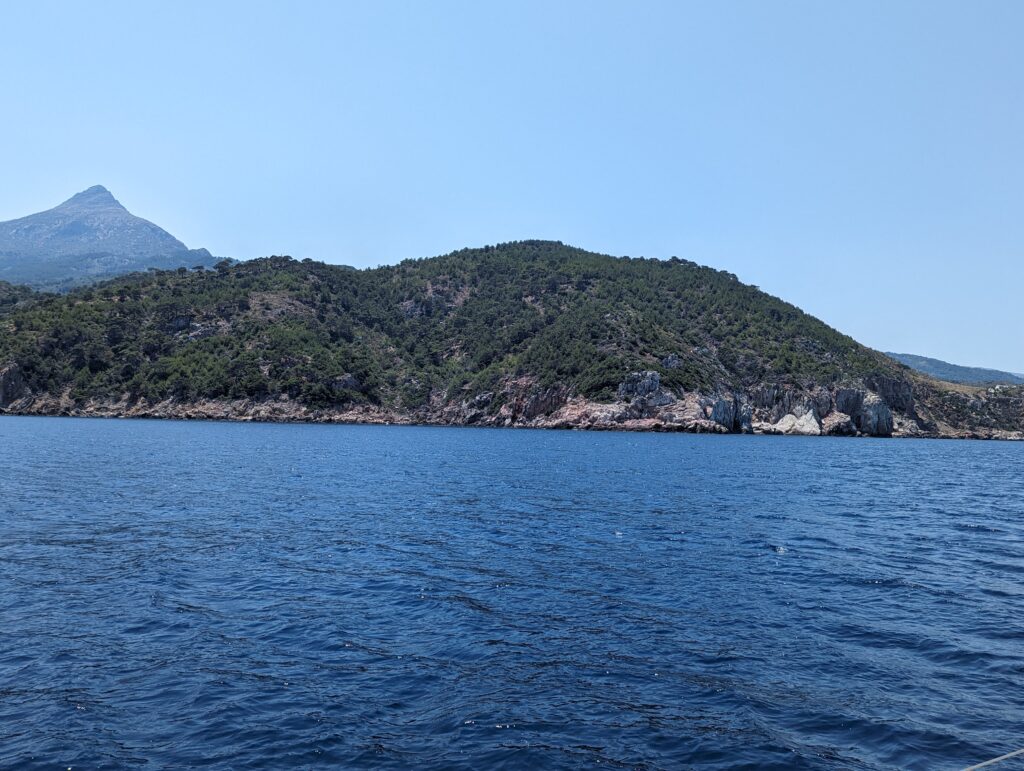
On Wednesday July 11 we departed Chios for Psara, a small island 42nm to the west. We had envisioned sailing most of the way, once we turned left at the top of Chios. However, the wind gods decided to play with us and we went from the wind on the nose when heading north to wind on the nose when we turned west at the top of the island. We did manage some good sailing for about 30 min once we cleared the west coast of Chios. The passage took 6.5 hours but mostly motoring! We Med-moored (i.e. dropped our anchor, reversed towards the dock and attached to the dock with stern lines) at the town dock in Psara. A local Coast Guard officer helpfully took our stern lines when we docked.
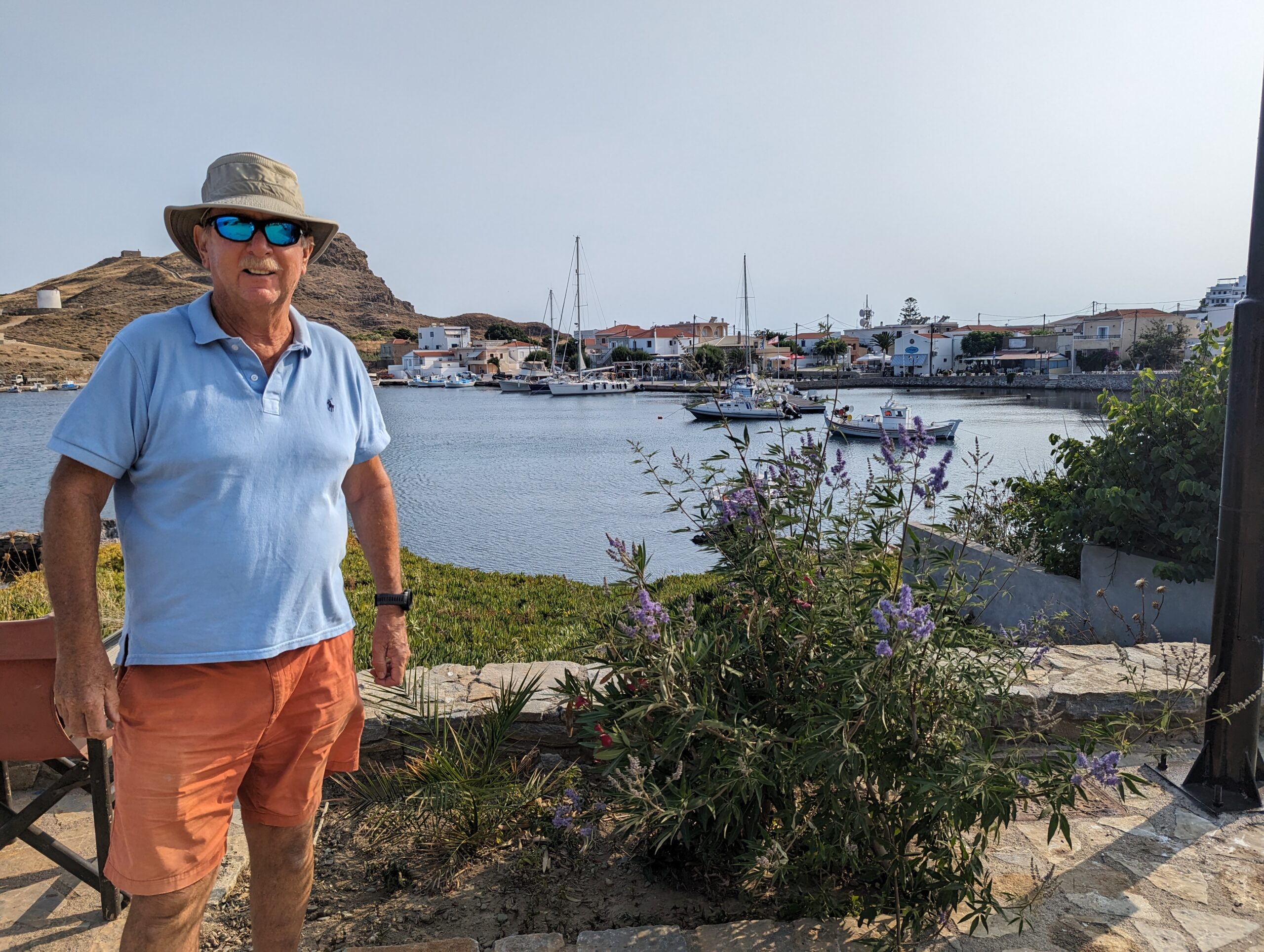
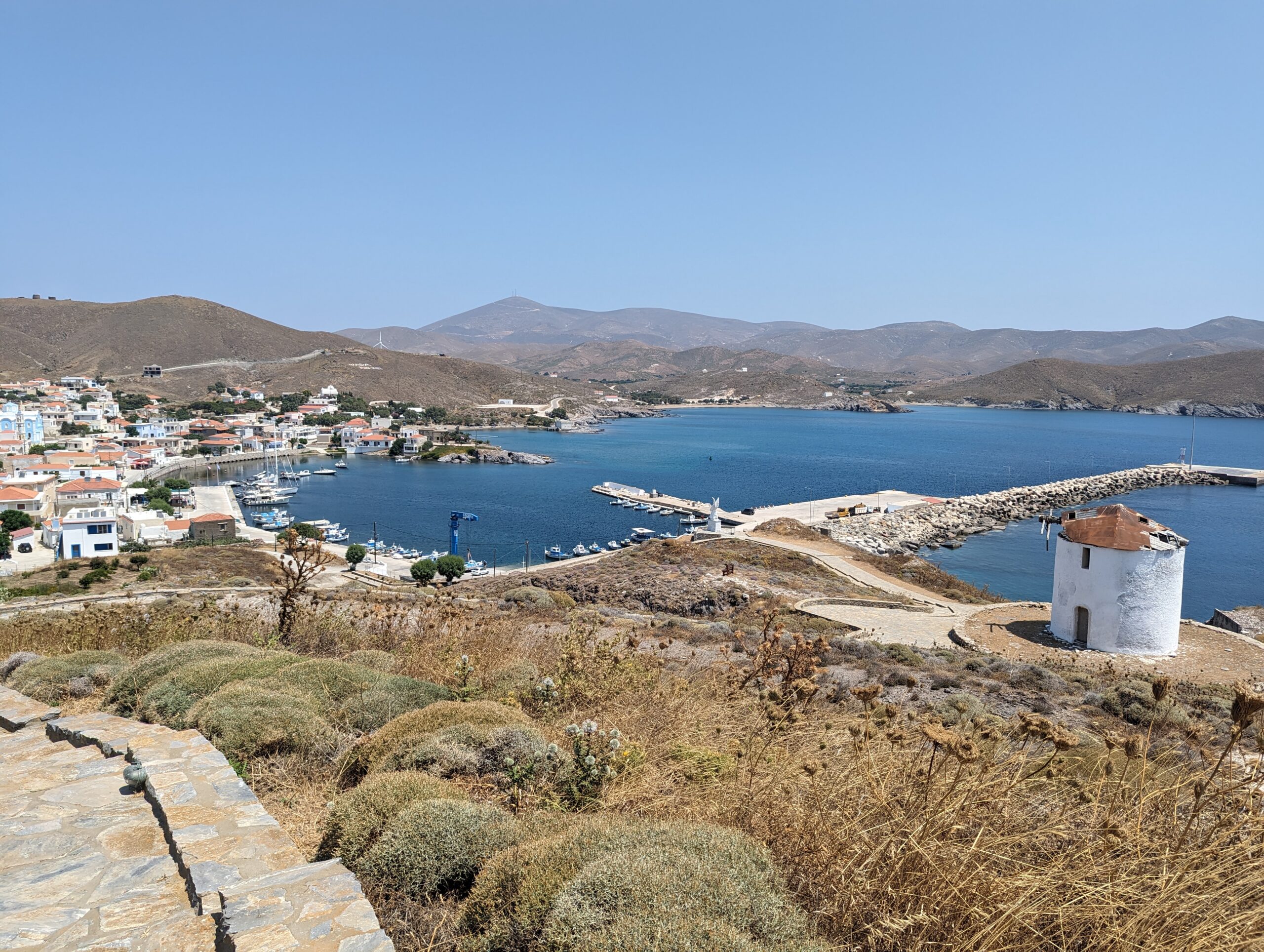

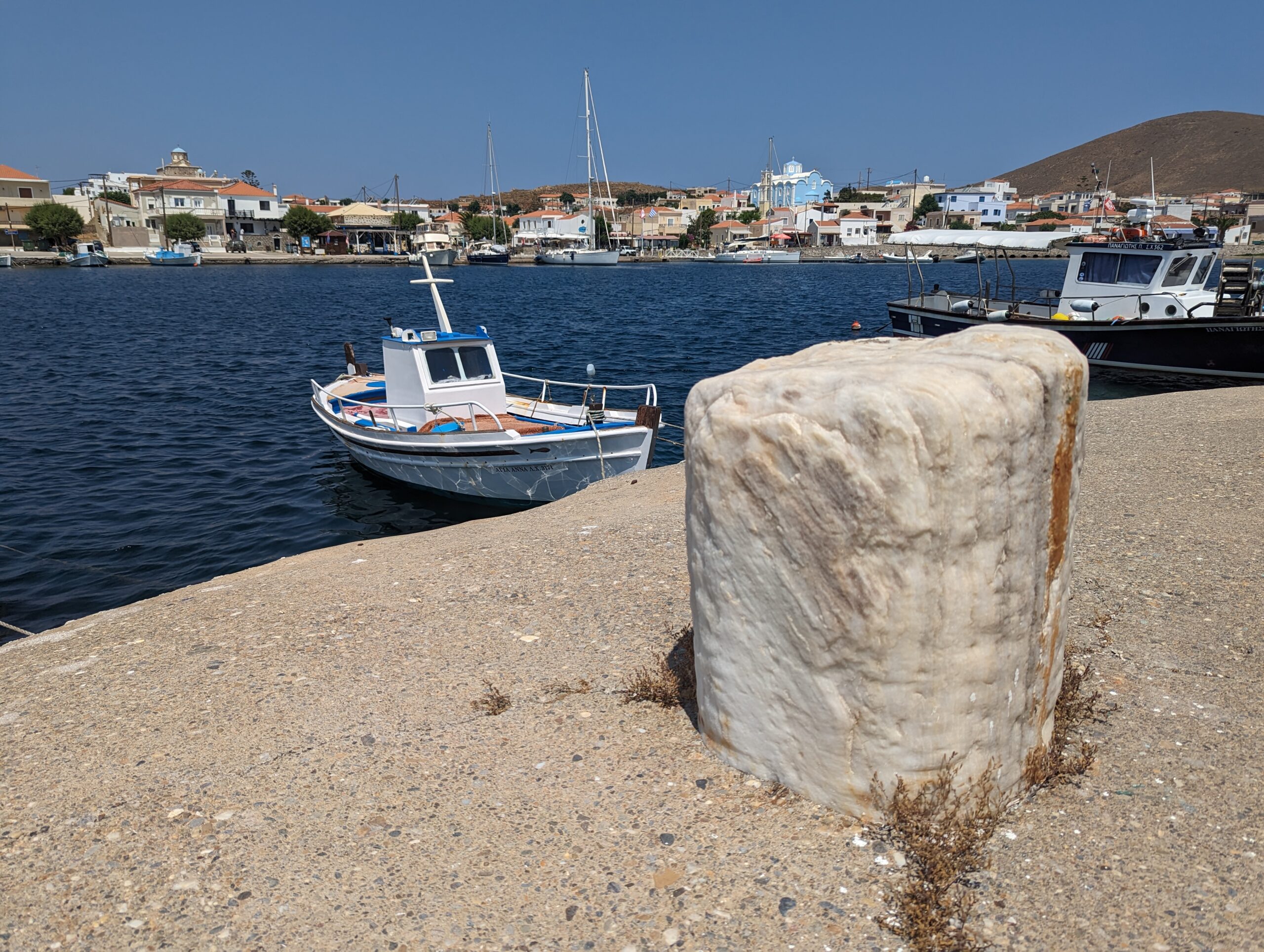
Psara has a population of nearly 500. It has its own flag, created during the Greek War of Independence, when the Ottomans massacred most of the population of around 7,500, although many were killed, including invading Turks, when the inhabitants puposely blew up the islands magazine. Four of the leading Greek admirals at the time were from Psara, and one eventually became the Greek Prime Minister. Psara has a very large monastery, a cathedral, and many churches; amazing for such a small island and its population.. The waterfront restaurants came alive after the sun had set. It was in the mid 30s during the day with intense sunn. The locals seemed very relaxed, enjoying the evening outdoor life. The waterfront street became a pedestrian precinct at sunset with kids riding their bikes or scooters and families strolling around or catching up with the local gossip in one of the restaurants. There were only a few other yachties there. Altogether it was a very pleasant experience.
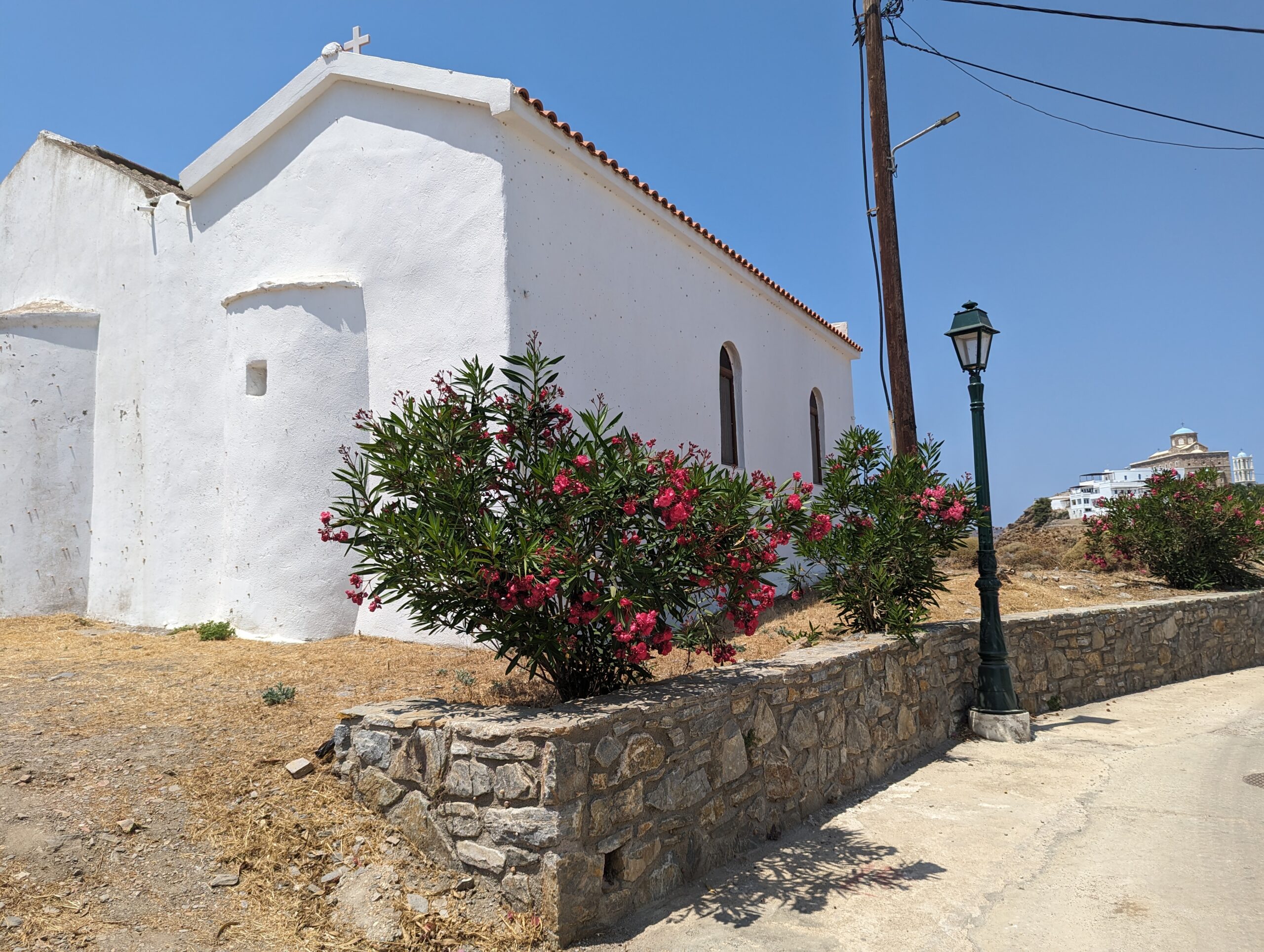
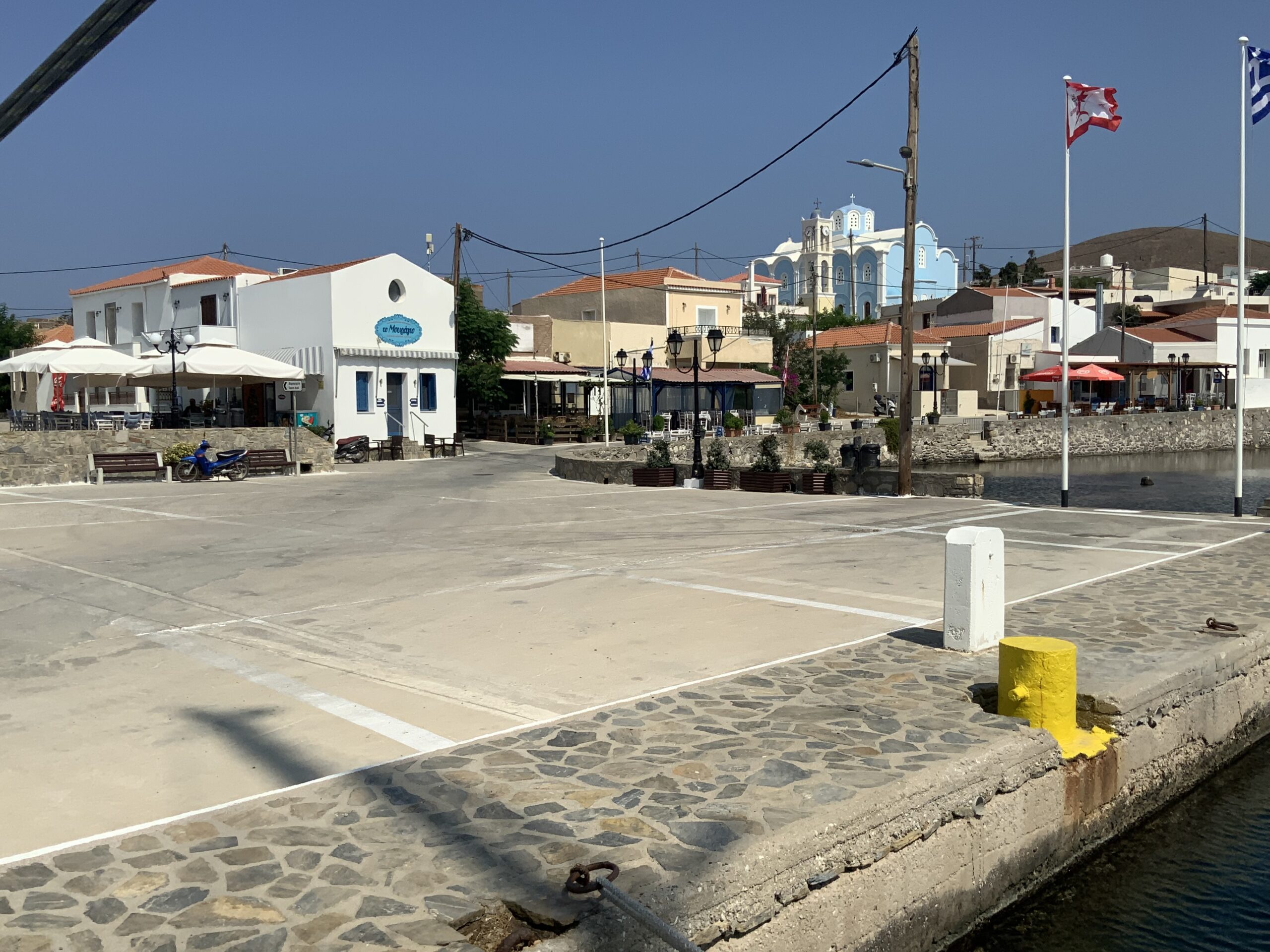
We departed Psara around 1900 on July 13 for a 97nm overnight passage to the Greek mainland. We sailed or motor-sailed, as the winds were generally too light, although the forecast had been promising for sailing most of the route. The AIS unit proved beneficial as we encountered may ships en route, especially in the straight south of Evia. We had planned to stop at a small anchorage on an island near the mainland, to get some sleep after the passage, but conditions were not favourable so we continued on to Sounio. Sounio is a spectacular anchorage in a small bay with the ruins of the Temple of Poseidon on the promontory overlooking the bay. We were now about 5 hours from Athens, but the forecast was predicting 30kts+ winds for a few days., so we moved to Vari (Varkiza) the following day and then on to Alimos marina for 4 days.
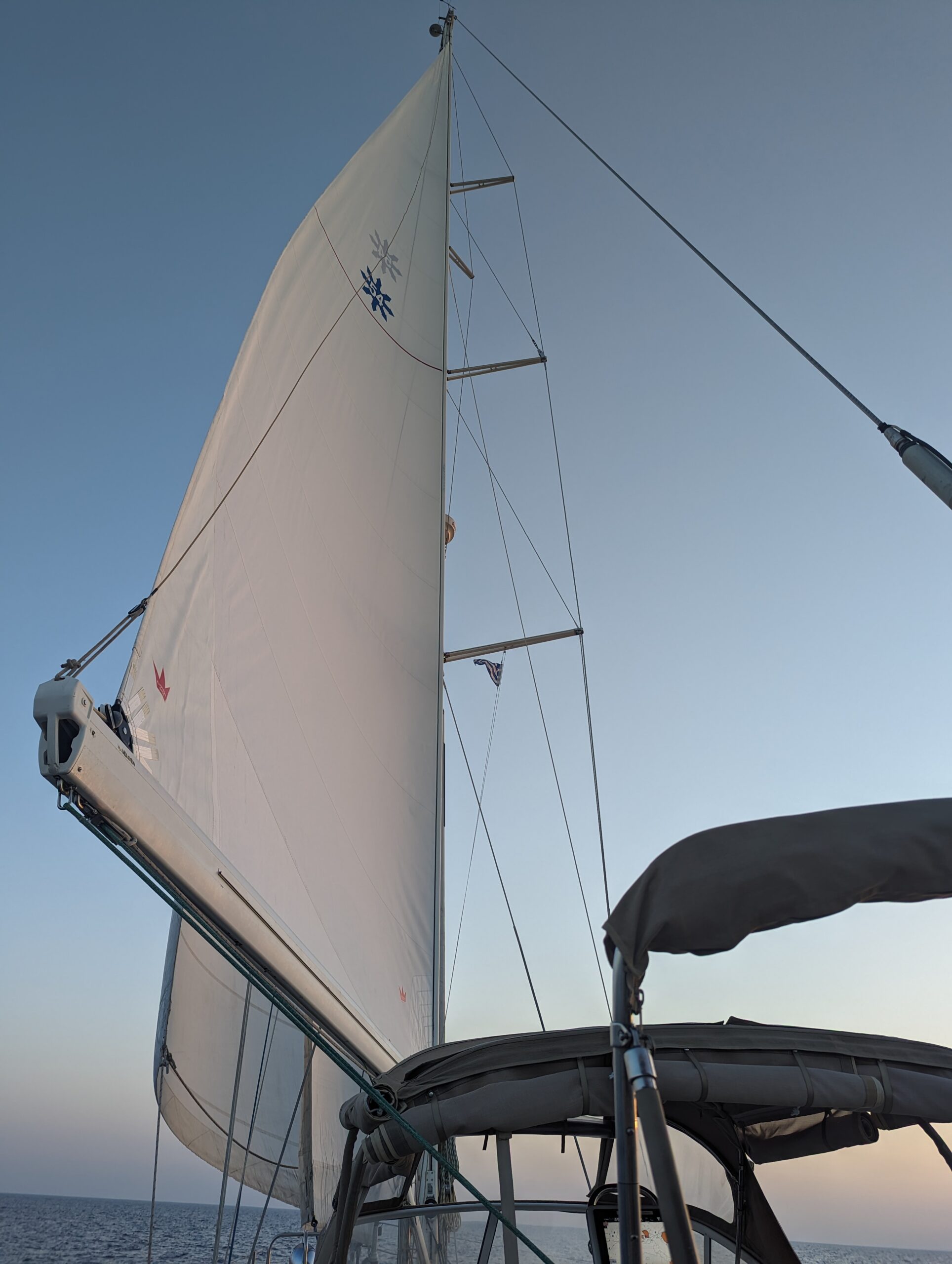
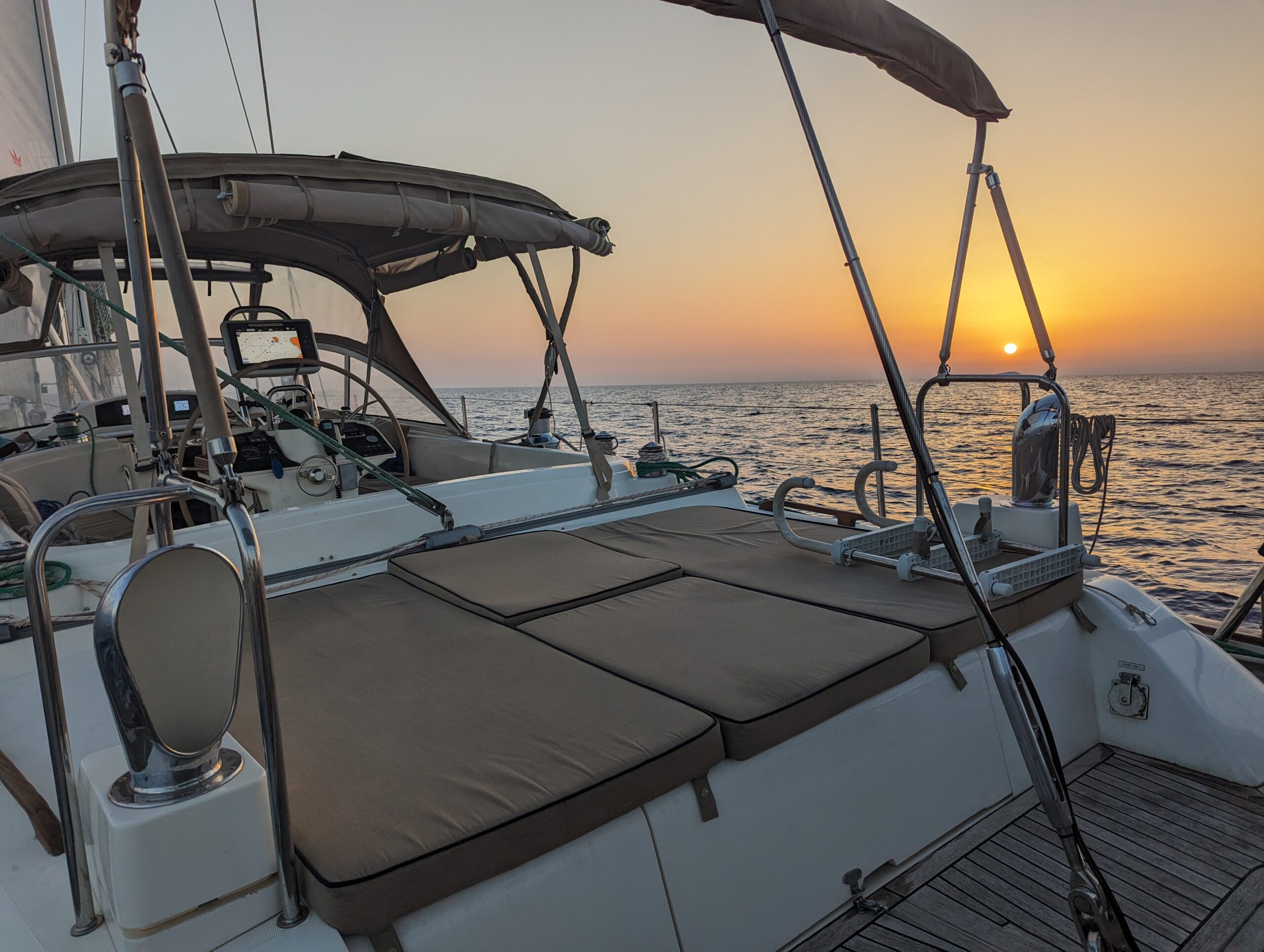
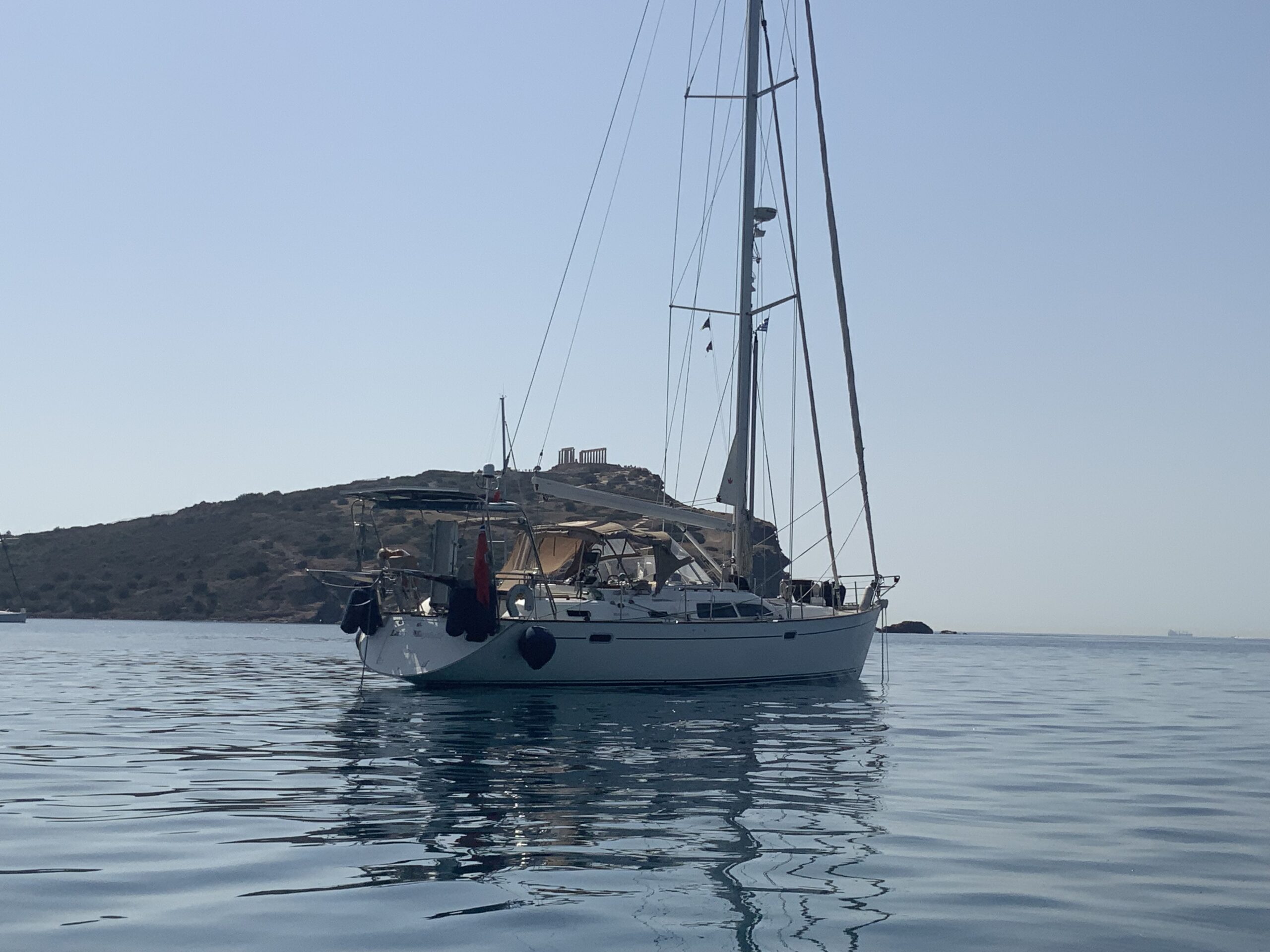
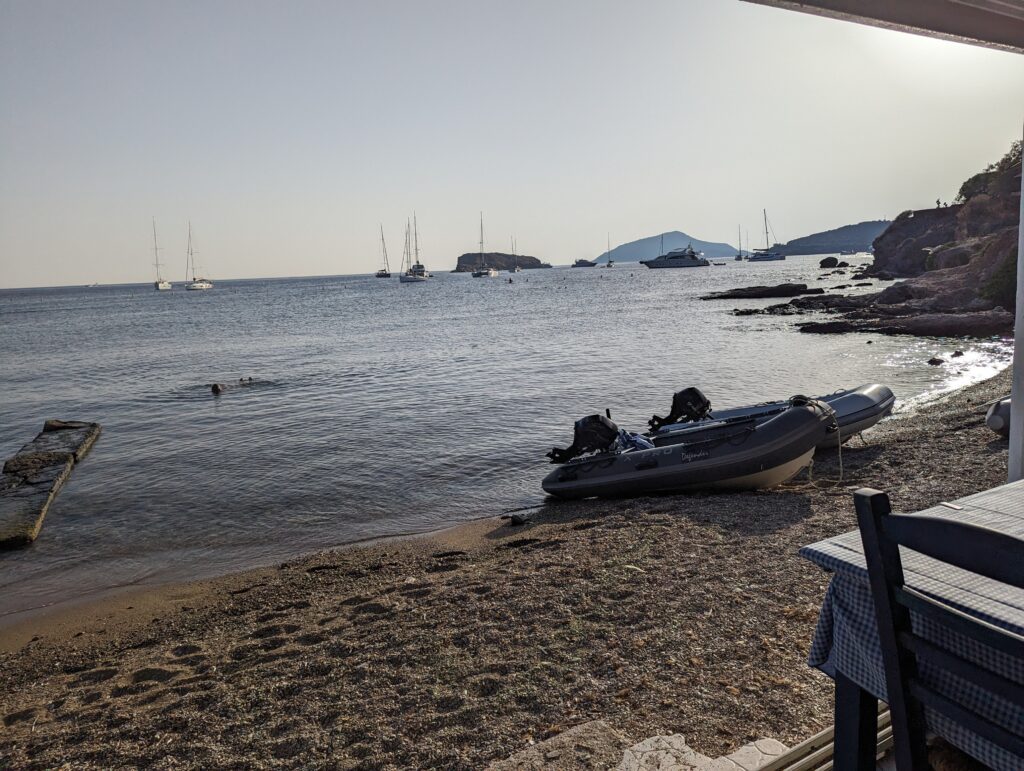
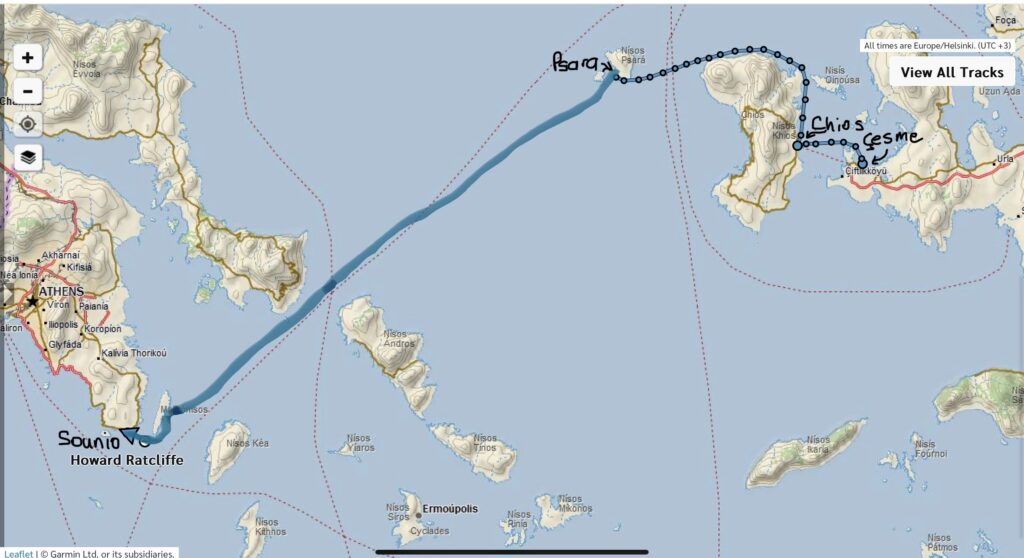
2 Comments
Jim Bailey
we enjoy reading your news, so descriptive. We assume you are both in good health, it all looks so idyllic.
Lots of love Jim and Tina
Nick Pearman
And the photos really bring it all to life. We do appreciate all the effort involved in meeting deadlines successfully and writing it all up afterwards! Rx